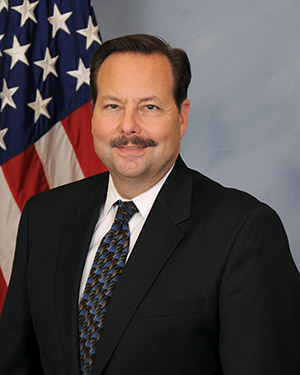By Jennifer Erb
In
2017-05-152017-05-31https://wvuieleaders.com/wp-content/uploads/2016/09/[email protected]WVU IE 200px200px
200px200px
 200px200px
200px200pxMark Deskins originally planned to go to Marshall University and major in Pharmacy. But he couldn’t imagine filling prescriptions for the rest of his life. His father suggested he consider engineering, but Mark didn’t want to follow his brother who was an engineer. It was a two-day shadowing experience with his uncle in a manufacturing plant that sold Mark on Industrial engineering as a career path. Mark spent his first two years in college at Bluefield College and then transferred to WVU.
Mark decided to stay at WVU for a Masters degree. He was a Teaching Assistant for Dr. Gochenour who passed away in the middle of the semester. Mark ended up being the teacher in the class. As fate would have it, Mark met his future wife, Sherry, during this time and his graduate degree plans ended when he decided to take a job with Burlington Industries. Mark stayed at Burlington for 2.5 years. Burlington wanted him to take a new position. This would involve a relocation and Sherry would not be able to find a job. Mark left Burlington to work for Jefferson Pilot Life Insurance. While this was a non-traditional job for an IE, Mark pioneered a number of new innovations while at Pilot. These included using artificial intelligence to assess insurance risks. Mark also helped Pilot move into the personal computer era.
Life happens and careers change. Mark and his wife had their first child. After going through 4 babysitters in one month, they realized that they needed to move closer to family. Both Mark and Sherry took jobs with the U.S. Navy close to Sherry’s parents.
Mark worked in an explosives manufacturing and had the opportunity to design the facility. “I’ve been a big believer in development programs,” Mark says. Through these programs, Mark became recognized for a number of innovations he was able to bring about.
Mark’s career in the Navy has involved a number of unique assignments. One of these involved the decommissioning of some of the most famous ships in the fleet. He supported the conversion of the USS Midway into a Naval Museum and the sinking of another ship to serve as an artificial reef.
One of the pivotal moments in Mark’s career was a program at Harvard. “I was the lowest paid and most junior person in the program. I discovered that I could hold my own with the other persons there who had much higher credentials.”
In his current position, Mark is the Director of Acquisition Career Management for the U.S. Navy and Marines. “My responsibility is to ensure that the Navy has the professional talent it needs to keep America safe.”
William Mark Deskins
Director, Acquisition Career Management
In May 2015, Mr. Deskins rejoined the ASN (RD&A) staff to serve as the Director, Acquisition Career Management (DACM), the Navy and Marine Corps’ lead for the professional development and management of the DoN acquisition workforce.
With over 25 years of professional experience, Mr. Deskins’ spectrum of experience includes private industry, Navy field, headquarters and program office assignments. From February 2009 to May 2015, Mr. Deskins was the Deputy Program Manager for Strategic and Theater Sealift (PMS 385), which included two ACAT programs: the Joint High Speed Vessel (JHSV) and the Mobile Landing Platform (MLP). During his tenure both programs went from Milestone B to Initial Operating Capability delivering five JHSVs and two MLPs. Prior to joining PMS 385, Mr. Deskins was the Chief of Staff for Team Ships and was responsible for front office operations and executive coordination and oversight of the vast array of issues related to surface ship acquisition, maintenance, modernization and disposal. From 2004 to 2007, he was a member of ASN (RD&A) staff and was responsible for executive oversight of issues related to surface ship, submarine and carrier maintenance, modernization and disposal.
From 2001 to 2007, Mr. Deskins was the Deputy Program Manager for Inactive Ships (PMS 333) in PEO (Ships) where he was responsible for the planning, programming, budgeting, and execution of the U.S. Navy’s inactivation and disposal of conventionally powered surface ships. As the last stage of the acquisition life cycle, he oversaw the decommissioning of 20 ships and the disposal of 46 ships thru foreign military sales (6), scrapping and recycling (12), fleet support through SINKEX (26), artificial reefing (1) and the donation the aircraft carrier ex-MIDWAY that operates today as a highly successful ship museum in San Diego.
Mr. Deskins previous jobs include working five years as an Industrial Engineer in private industry in North Carolina and beginning his government career as an Industrial Engineer at the Indian Head Division of the Naval Surface Warfare Center (NSWC). Promotions brought him to the NSWC headquarters staff where he worked strategic planning and corporate operations. He was selected for NAVSEA’s Commander’s Development Program where he held highly responsible positions working on combat systems, strategic and business planning at the Division and NAVSEA corporate level, and PEO Program Management assignments.
His awards include two Navy Superior Civilian Service Awards in 2004 and 2014, two Navy Meritorious Civilian Service Awards in 1994 and 2000, and several Special Act Awards and Outstanding Performance Awards. He is an acquisition professional, DAWIA Level III certified in Program Management, and has held memberships in the International Council on Systems Engineering and the Institute of Industrial Engineers.
Mr. Deskins’ education includes a Bachelor’s in Industrial Engineering from West Virginia University and Master’s in Technology Management from the University of Maryland University College. His Executive education includes Harvard Business School and University of North Carolina.